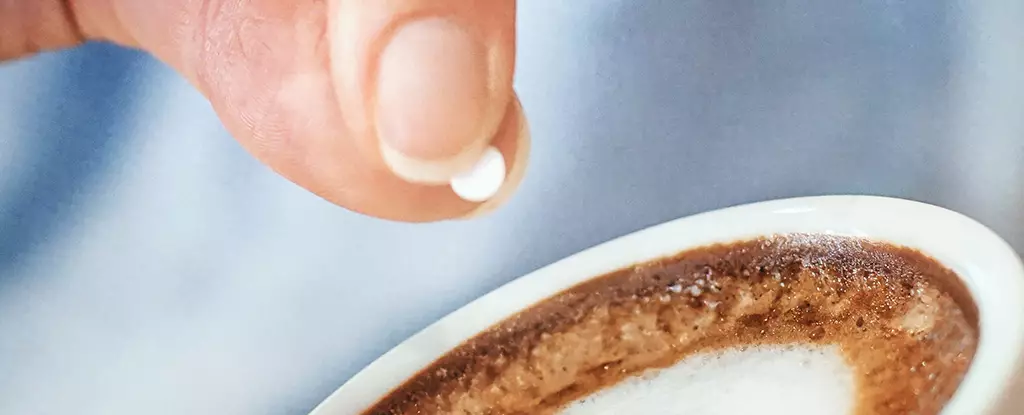In recent years, the rise of antibiotic-resistant bacteria has posed an increasingly dire threat to public health. Unseen invaders, once kept at bay by our most potent drugs, have adapted and evolved, leading to infections that are often impossible to treat. Amid this alarming landscape, a surprising ally may emerge from one of the most unexpected corners of the pantry: saccharin, a common artificial sweetener. Research spearheaded by a team at Brunel University in the UK indicates that saccharin may possess properties that challenge the very foundations of antibiotic resistance. This revelation is not just fascinating—it could redefine our approach to a major global health crisis.
The Science Behind the Sweetness
At the heart of this research lies the fundamental understanding of how saccharin interacts with bacterial strains. Historically regarded merely as an innocuous substitute for sugar, saccharin’s potential as an antimicrobial agent raises crucial questions about our perceptions of artificial substances in nutrition. When exposed to saccharin, researchers found a disturbing yet compelling truth: the sweetener could disrupt bacterial structures significantly. Instead of merely sidestepping dangerous microorganisms, saccharin appears to invade their defenses, compromising their integrity until they lose the battle for survival.
By targeting stubborn pathogens like Staphylococcus aureus and Escherichia coli, the study reveals a dual-action strategy: saccharin not only impedes bacterial growth but also enhances the effectiveness of existing antibiotics. This phenomenon is more than theoretical; it’s a practical breakthrough in our fight against infections that have become endemic in healthcare settings worldwide. The significance of these findings cannot be overstated—transforming a mundane sweetener into a weapon against some of the toughest adversaries in medicine.
From Lab to Life: Practical Implications
Building upon the initial findings, researchers at Brunel University have taken a remarkable step further by developing a surgical dressing incorporating saccharin. Initial trials on pig skin demonstrate that this novel dressing outperformed traditional alternatives, including silver-infused materials, in reducing bacteria levels. Herein lies the crux of innovation: combining science with practicality can bridge the gap between laboratory success and real-world application. It’s not simply about discovering a new method; it’s about integrating that method into everyday medical practice.
The potential for saccharin to serve not only as a sweetener but also as a valid therapeutic option offers a refreshing perspective on how we can harness existing substances to combat pressing health issues. Given that novel antibiotic development faces insurmountable costs—often billions of dollars and decades of time—utilizing a compound already ingrained in our society presents a stunningly efficient alternative.
Public Health and Ethical Considerations
Despite the excitement surrounding saccharin, one cannot ignore the ethical dimensions intertwined with artificial sweeteners in general. While this study highlights saccharin’s antimicrobial potential, discussions about its safety and health repercussions must remain a priority. The full spectrum of artificial sweeteners’ effects on the gut microbiome and overall health should be scrutinized before rushing to embrace this discovery wholeheartedly. In an era defined by proactive health measures, promoting substances that may also carry hidden risks could be counterproductive.
The dialogue surrounding saccharin must reflect a center-wing liberal understanding of public health—promoting advancements while ensuring comprehensive safety protocols and ethical implications are sufficiently addressed. It’s imperative that, as we explore this innovative avenue, we do not lose sight of potential adverse outcomes. The mantra of “first, do no harm” should guide the deployment of this sweetening agent in clinical settings.
Hope Amidst the Crisis of Resistance
The statistics on antibiotic resistance paint a chilling picture: millions are affected annually, and the sheer scale of avoidable deaths brings urgency to the need for novel treatments. While research suggests saccharin could play a pivotal role in harnessing new therapeutic tactics, it is crucial that this excitement is tempered with rigorous testing and a thorough evaluation of its long-term effects on human health.
As the scientific community grapples with the implications of antibiotic resistance, saccharin stands poised as a beacon of hope. It not only embodies the intersection of innovation and public necessity but also reinforces the notion that sometimes, solutions lie outside the confines of traditional medicine. In a world where the battle against infections often feels futile, saccharin’s potential role as a catalyst in our fight could lead the charge towards a healthier future.


Leave a Reply